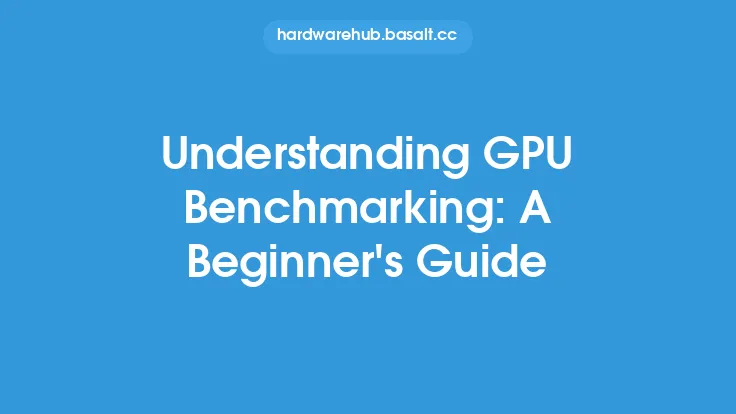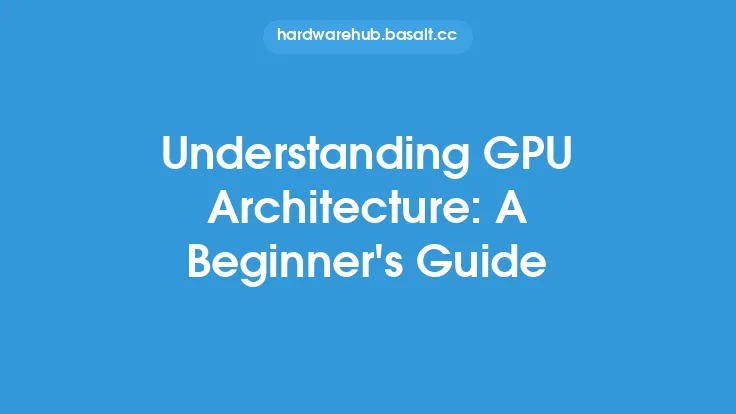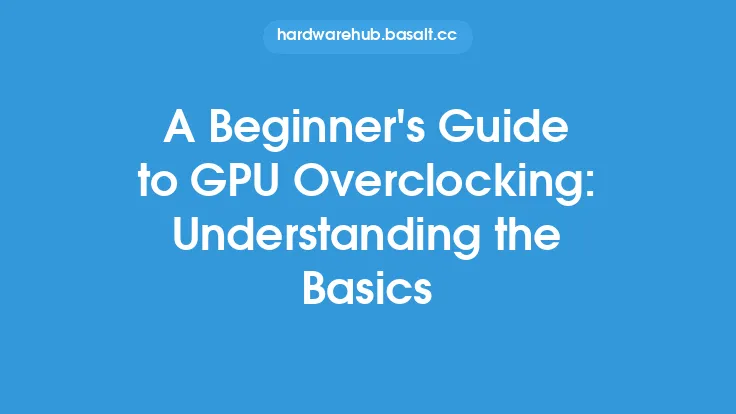When it comes to understanding GPU performance, it's essential to start with the basics. A Graphics Processing Unit (GPU) is a specialized electronic circuit designed to quickly manipulate and alter memory to accelerate the creation of images on a display device. Over time, the role of the GPU has expanded beyond just graphics rendering to include tasks such as scientific simulations, data analytics, and machine learning. At its core, a GPU is composed of several key components, including the graphics processing clusters, memory interfaces, and display controllers.
Introduction to GPU Architecture
The architecture of a GPU is designed to handle the massive parallel processing requirements of graphics rendering and other compute-intensive tasks. This is achieved through the use of multiple processing units, known as CUDA cores or stream processors, which are capable of executing thousands of threads concurrently. The GPU architecture also includes a large amount of memory, known as video random access memory (VRAM), which is used to store graphics data, textures, and other information. The memory interface plays a critical role in determining the overall performance of the GPU, as it dictates the bandwidth at which data can be transferred between the GPU and system memory.
GPU Performance Factors
There are several factors that contribute to the overall performance of a GPU. One of the most significant factors is the clock speed, which measures the number of instructions that can be executed per second. A higher clock speed generally results in better performance, but it also increases power consumption and heat generation. Another important factor is the number of processing units, which determines the level of parallel processing that can be achieved. Additionally, the amount and type of memory, as well as the memory bandwidth, play a crucial role in determining GPU performance. Other factors, such as the GPU's cooling system, power management, and driver software, can also impact performance.
GPU Memory and Bandwidth
GPU memory, also known as VRAM, is a critical component of the GPU architecture. The amount of VRAM determines the maximum resolution and detail level that can be supported, as well as the number of textures and graphics data that can be stored. The type of memory used, such as GDDR6 or HBM2, also impacts performance, with higher-speed memory resulting in better bandwidth and lower latency. The memory bandwidth, which measures the rate at which data can be transferred between the GPU and VRAM, is also essential for determining performance. A higher memory bandwidth allows for faster data transfer, resulting in improved performance in graphics-intensive applications.
GPU Processing Units
The processing units, also known as CUDA cores or stream processors, are the heart of the GPU architecture. These units are responsible for executing instructions and performing calculations, and are designed to handle the massive parallel processing requirements of graphics rendering and other compute-intensive tasks. The number of processing units, as well as their clock speed and instruction set architecture, determine the overall performance of the GPU. Additionally, the processing units are often divided into smaller groups, known as clusters or sub-units, which can be powered down or clocked down to reduce power consumption when not in use.
Power Management and Cooling
Power management and cooling are critical components of the GPU architecture, as they directly impact performance, power consumption, and reliability. The power management system is responsible for regulating the voltage and current supplied to the GPU, as well as monitoring temperature and adjusting clock speeds accordingly. The cooling system, which can include air or liquid cooling, is designed to dissipate heat generated by the GPU, and is essential for maintaining performance and preventing overheating. A well-designed power management and cooling system can result in improved performance, reduced power consumption, and increased reliability.
Driver Software and Optimization
The driver software plays a critical role in determining GPU performance, as it acts as an interface between the operating system and the GPU hardware. The driver software is responsible for managing resources, scheduling tasks, and optimizing performance, and is often updated to include new features, bug fixes, and performance enhancements. Additionally, the driver software can be optimized for specific applications or workloads, resulting in improved performance and efficiency. Other optimization techniques, such as multi-threading and data compression, can also be used to improve GPU performance in specific applications.
Conclusion
In conclusion, understanding GPU performance requires a deep understanding of the underlying architecture, components, and factors that contribute to overall performance. By considering the clock speed, number of processing units, memory type and bandwidth, power management, cooling, and driver software, it's possible to gain a comprehensive understanding of how a GPU works and how its performance can be optimized. Whether you're a gamer, graphics designer, or developer, understanding GPU performance is essential for getting the most out of your hardware and achieving optimal results.





